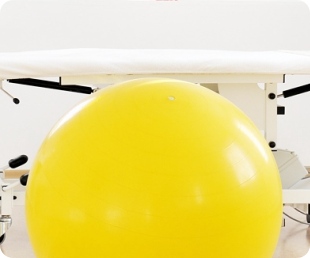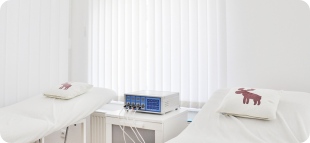

O Biocentru P
To Buy Prelone Online Visit Our Pharmacy ↓
 Navigating Side Effects: How to Take Prelone Safely
Navigating Side Effects: How to Take Prelone Safely
Prelone, commonly known as prednisolone, is a potent corticosteroid medication used to dampen the immune system's response and decrease inflammation. This versatile drug is prescribed for a range of conditions including autoimmune diseases, allergic reactions, and asthma. Its efficacy lies in its ability to mimic the effects of natural corticosteroid hormones produced by the adrenal glands, thereby reducing swelling, redness, and pain associated with various ailments.
Harnessing the power of Prelone requires an understanding of its pharmacological impact on the body. While it can be incredibly effective in controlling symptoms, the drug must be managed carefully to prevent potential complications. The therapeutic benefits of Prelone are most pronounced when its use is tailored to the individual’s specific medical condition, ensuring the advantages are harnessed while minimizing the risk of adverse effects.
Identifying Common Side Effects and Their Manifestations
Prelone, a brand name for the corticosteroid prednisolone, is known to exert significant anti-inflammatory and immunosuppressive effects, which is beneficial for treating various medical conditions. However, this efficacy comes with a spectrum of potential side effects that patients may face. Weight gain, increased appetite, high blood pressure, and mood swings are some of the more frequently observed reactions. Users may also experience elevated blood sugar levels, which can be particularly concerning for diabetics, and fluid retention, leading to swelling in various areas of the body.
It is imperative for individuals on Prelone to monitor for less common but more severe side effects such as eye problems, including blurred vision, and abdominal pain, which could indicate stomach or intestinal bleeding. Prolonged use raises the risk of osteoporosis or bone density loss, muscle weakness, and the possibility of developing peptic ulcers. Additionally, the suppression of the immune system heightens susceptibility to infections, warranting vigilance for symptoms like fever and sore throat that could signify an underlying infection requiring prompt medical attention.
Develop a Proactive Plan: Timing and Dosage Strategies
Developing a safe and effective regimen for taking Prelone requires careful consideration of timing and dosage. It's essential to follow your healthcare provider's recommendations closely, as the dosage may vary depending on the condition being treated and your individual response to the medication. Typically, Prelone should be taken with food to lessen gastrointestinal discomfort, and the timing should be consistent daily to maintain stable drug levels in the body. Additionally, your doctor might advise a tapered dosing schedule to gradually lessen the dose, minimizing the risk of adrenal insufficiency.
It's also crucial to adhere to your dosing schedule without skipping doses or stopping the medication abruptly, as this could lead to a flare-up of the underlying condition or withdrawal symptoms. By communicating regularly with your healthcare provider, you can adjust the dosage if necessary and ensure optimal efficacy of the treatment. Monitoring how your body reacts to Prelone can help in identifying the most appropriate dosing intervals to manage the symptoms effectively while minimizing potential side effects.
Lifestyle Adjustments to Mitigate Prelone Side Effects
Making mindful lifestyle changes can significantly impact the management of Prelone's side effects. A balanced diet, rich in fruits, vegetables, whole grains, and lean proteins, helps fortify the body's defenses. It's also advisable to limit the intake of salt, sugar, and saturated fats to avoid additional stress on the body. Ensuring adequate hydration is crucial, as Prelone can cause fluid retention. Therefore, drinking sufficient water throughout the day can help flush out toxins and reduce bloating. Incorporating a gentle exercise regime, as tolerated, can also boost overall physical health and aid in maintaining a healthy weight, as Prelone may lead to weight gain.
Furthermore, good sleep hygiene plays a pivotal role in counteracting the side effects of Prelone. Establishing a consistent sleep schedule, creating a restful environment, and minimizing screen time before bed can promote better sleep quality. Avoiding caffeine and alcohol, particularly close to bedtime, is essential since Prelone can cause sleep disturbances. By adhering to these lifestyle modifications, individuals may not only diminish the prevalence of side effects but also enhance their body's ability to cope with the ongoing treatment, leading to a more tolerable experience with Prelone therapy.
Nurturing Mental Health While on Prelone Therapy
The psychological well-being of patients undergoing Prelone treatment is paramount, as the medication can sometimes trigger emotional and cognitive side effects. Mood swings, anxiety, and depression are not uncommon, and therefore, incorporating stress-reduction techniques such as mindfulness, meditation, and controlled breathing exercises could prove beneficial. Moreover, maintaining a stable routine that includes activities promoting relaxation, like yoga or engaging in hobbies, can enhance coping mechanisms and provide a mental sanctuary from the stressors of daily life while on medication.
It is also crucial that patients have a strong support system in place to help manage the emotional rollercoaster that may accompany Prelone therapy. Friends, family, and support groups specialized in chronic illness can offer invaluable comfort and understanding. Additionally, therapeutic interventions, like cognitive-behavioral therapy (CBT), can equip patients with strategies to handle negative thought patterns. Regular consultations with a mental health professional enable early detection and intervention for medication-induced psychological distress, ensuring a more holistic approach to managing side effects during Prelone treatment.
When to Seek Help: Recognizing Serious Side Effects
Knowing the difference between mild and severe side effects is crucial for anyone taking Prelone. Mild reactions may include things like mild headaches, increased appetite, or trouble sleeping, which often do not necessitate medical attention. However, there are certain symptoms that should trigger immediate concern. If you experience vision problems, such as blurring or tunnel vision, swelling of the ankles or feet, unusual weight gain, or severe mood changes like depression or thoughts of harming yourself, it's time to contact a healthcare provider without delay.
Moreover, signs of infection can be more serious in those taking Prelone, due to its immune-suppressing effects. Watchful monitoring for symptoms like fever, sore throat, or chills is imperative. Additionally, any signs of gastrointestinal bleeding, such as black or bloody stools, persistent stomach/abdominal pain, or vomit that looks like coffee grounds, require immediate medical intervention. Stay vigilant for these reactions; prioritizing prompt consultation with your healthcare provider can prevent complications and ensure your safety while undergoing Prelone therapy.
http://sinusys.com/images/icons/png/lexapro.html https://imed.isid.org/wp-content/languages/themes/po/trazodone.html https://gaetzpharmacy.com





